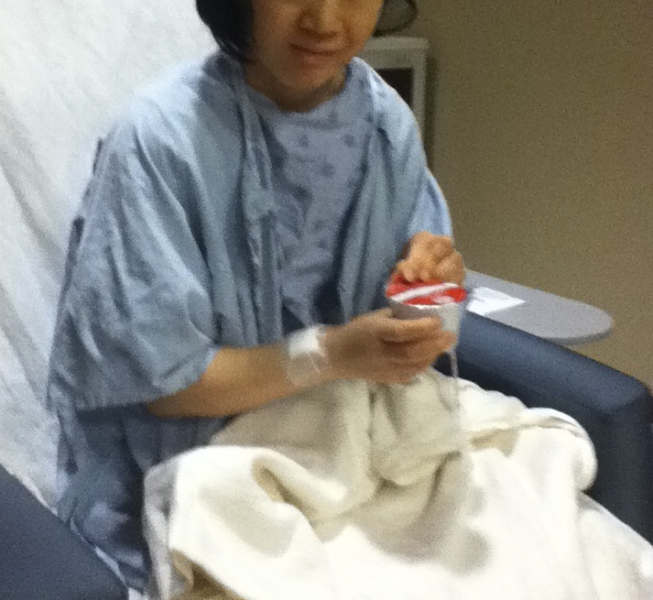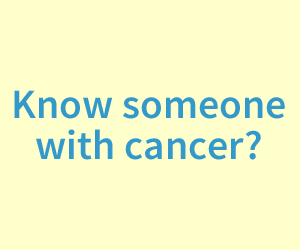Cryoblation experience: April 2013 lung cryoablation
I hope the blogging of my experiences will help others understand cryoablation and/or to help prepare them for their cryoablation procedure. For myself, I find that knowing ahead of time what the procedure is like helps calm me for the procedure.
April 2013
Where was the cryoablation done? With Dr. Peter Littrup at Karmanos Cancer Center, Detroit, Michigan.
Day before procedure:
The day before the procedure, there may be an office visit with the doctor to go through what will be done. Best to drink enough water the day before procedure to make it easier for the IV insertion. No food/drink after midnight. Medication the morning of the procedure is ok if taken with minimal water.
Checking in:
At 6am, I checked into the front desk of Karmanos Cancer Center. There were a few people there, and only one person at the front desk, so it took a long time for me to be checked in. She verified my insurance information, and since I was paying out-of-pocket, payment was made. Then she directed me to next stop - Meyers Lab. She asked a staff to walk us there, as it's quite a maze inside the building.
(Note: I noticed that a binder at the front desk had that said "Peter Littrup Tuesday" and "Hussein Aoun Wednesday". Dr. Aoun trained with Dr. Littrup and is highly skilled at cryoablation as well. Perhaps they each work on cases on their respective days.)
At Meyers Lab, staff looked at my paperwork and directed me to the pre-op area.

Corridor leading to Meyers Lab
Pre-operation:
At the pre-op station, they assigned me a bed, and asked me to change into the gown, socks + cap.
They asked for a urine sample - it's better to give that sample before changing into the gown + before the IVs are put in.
Two IVs were put in, one on each arm. They like to put the IV in the lower arm (or hand). If those locations don't work, then they try to put the IV in higher up along the arm. Blood was then drawn from the IV for testing and the saline drip was started. For this cryoablation, the IV insertion hurt me the most. My wrist got bruised adjacent to the IV and took weeks to heal.

My IV - secured down with paper tape because I'm allergic to Tegaderm.
They also did a EKG (with the 6+ patches stuck onto my torso + a crazy tangle of cords). The nurse removed all the patches after the reading was done.
There is a long wait in this area, as they need to wait for the blood test results to come back, and to wait for the doctors to be ready for the procedure. I asked for blankets to keep warm. There is a TV above the bed and there is wifi.
When the doctors were ready for the procedure, I got wheeled in the bed to the dimly lit intervential radiology prep room. Here I met with the anethesiologist and anethesiologist nurse, as well as Dr. Littrup and Barbara, his nurse. They had me sign some documents (stating what area they were going to cryoablate), answer any last minute questions. All this time, Cancerhusband was able to be by my side and help with asking questions and talking with the doctors/nurses.
When the doctors rolled me into the procedure room, Cancerhusband had to go to the waiting room.
In the procedure room:
This room has the CT machine that is used during the procedure to image where the tumor is and where the needles are placed. It is very small and crowded with equipment. There is a small office with a large window that looks into the procedure room, where all the computers are (presumably where they view the images from the CT scanner). There were also many staff there - anethesia team, nurses, doctors. Dr. Littrup works with a few doctors who train under him.
They asked me to get off the bed that I was rolled into the room on, and go onto the CT scanner "bed". There was a large bean bag on the CT scanner bed that I had to lay on. It kept me in the right position. For this procedure they asked me to lie on my left side, with my arms raised above my head, as the cryoablation probes were to be inserted via my back. They stuck on sticky patches onto my torso to monitor my heart during the procedure. They then positioned me with rolled blankets and used various things to fasten me into position.
They asked me to verify my name, what procedure I was going to have, etc.
Then the anethesiologist told me that he was starting the anethesia. One of the drugs that I always get during procedures is versed, which wipes out my memory of the procedure. For this procedure, I had local anethesia (Propofol) along with Versed. So, I was conscious, but a bit sedated and my memory was wiped out.
The last thing I remember from the procedure is that the CT scanner bed moved in for me to be scanned.
Post-op:
I wake up in the post-operative room. Cancerhusband joined me here. I'm still on IVs with an oxygen meter and oxygen mask on. The nurse switches me to an oxygen cannula instead of the mask. I had an X-ray taken in bed. There was no pain when I sat up, but when I took a deep breath for the X-ray, it felt tight around the front of the torso. The X-ray was taken to monitor me for pneumothorax (collapsing of the lungs) which is a common side effect from lung cryoablation.
I felt normal, I didn't have any funny head feeling and no nausea (which I felt before with my previous cryoablation due to the different drugs they gave me.)
I was very thirsty, so I asked the nurse for water. He couldn't give me water yet, but gave me ice chips instead.
Two hours later, they took another X-ray -- one X-ray with air in lung (breathe in and hold it), and one X-ray with no air in the lungs (breathe out and hold it). We had to wait for the radiologist to verify that there was no pneumothorax, then I was discharged!
They wheeled me to another room, as Dr. Littrup wanted to speak with us before discharging. The nurse offered me juice, which was much needed as I didn't eat anything since midnight the day before!

Eagerly looking forward to my first cup of juice after fasting for a day!
When Dr. Littrup and Barbara, his nurse, came in, they told me that the procedure almost didn't happen as I was coughing a lot once I was under sedation. Perhaps my body was more relaxed and started the cough reflex, as I was recovering from a cold. Somehow things stabilized and Dr. Littrup was able to do the procedure. Praise God!
A nurse then gave us the discharge paperwork - what to expect, when to go to the hospital, and an upcoming X-ray appointment a week later to check that there was no pneumothorax. This confirmation is needed before flying.
Then I was able to change back to my own clothes and walk out of the hospital at 3pm the same day! The nurse was surprised that I didn't need a wheelchair! It was so amazing to me that I was able to walk into the hospital with a tumor in my lung, and before the end of the day, I walked out with the tumor hopefully completely killed. We're very thankful to Dr. Littrup and his team for a very successful cryoablation!



